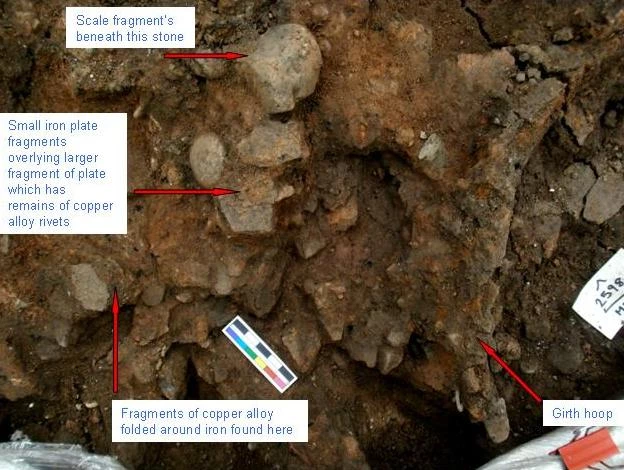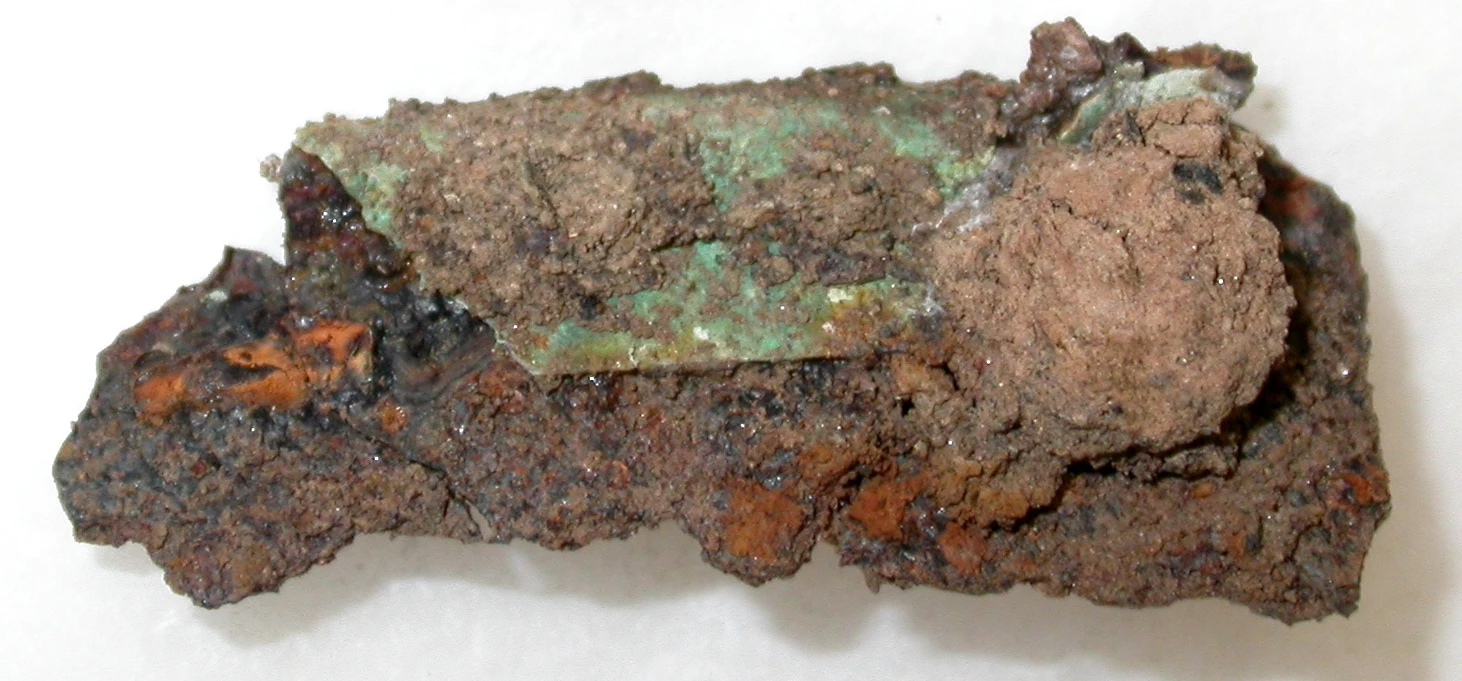Block Blog: Primary Investigations
9 August 2011
At this juncture in the investigation of this block-lift, I am making every effort to outline the relationships (if any) between artefacts. As can be see in the first photograph, plenty of small pieces of iron plate, often with no telling association with larger plates, emerge as soil is scraped away. Aside from photographing their position for future reference, and examining them for signs of the remains of fittings, impressions of textile or leather, there is not much that can be done with these anonymous fragments. Moreover, these fragments often overlie more interesting and coherent features, and so I am generally removing these: I will most likely x-ray these in large batches at a later date. As you can tell by the annotations, I’ve begun to get a good idea of the fragile nature of the fragmentary, corroded copper and iron artefacts mixed in the burial deposit, and have begun to grasp how difficult lifting the larger pieces of lorica will be.
So far I have had limited success at recovering any ‘true edges’ of the iron armour, as most of the vulnerable thin plate has been broken. Finding edges greatly improves our chances of identifying plates, and where two edges have been found, dimensions such as the width of the plate can give us an idea of which part of the lorica cuirass the plate comes from. It also helps us to make educated comparisons with examples of Roman armour found from other sites. For instance, the iron plate recovered in the second photograph has a width of 6.5 cm across, dimensions similar to those recorded for the armour fragments found amongst the Corbridge Hoard, and from the Austrian site, Carnuntum. It also has the very corroded remains of two copper alloy rivets, which improves our understanding of how the cuirass was constructed and held together.
As I work I am keeping the surface of the soil block wet, by spraying it with deionised water. This prevents the soil from drying out too much, separating, and breaking the iron remains as it falls into chunks. As most of the iron is in such a poor condition, consolidation with a removable acrylic adhesive, such as Paraloid B72 (ethyl methacrylate copolymer) is a must (which is why in some photographs the iron surface appears to have a dark sheen to it).
Whilst excavating an area of the block to the left of the photograph, I came across an exciting, (and sadly, very degraded) find: copper alloy wrapped around a thin iron plate. It can be seen in-situ in the photograph to the right, and after excavation in the photograph below. Sadly, as not much of the object has been recovered, a firm identification of this piece hasn’t been reached yet, though further excavation might yield more clues.
Readers may have noticed that I have begun to clean the outside of what is most likely a girth hoop. The exposed iron plate is 1mm in thickness, and the hoop is broken in several places, that I can see from the surface. When focusing on this feature, I will have to be careful to remove enough soil and other burial debris to reveal the curved plate’s shape, whilst maintaining the earthy support until I am ready to remove the that section of armour from the soil block. The next blog entry will focus on describing the results of excavations in this area, which includes a copper-alloy tie loop, still associated with the iron plate.





Comments - (1)